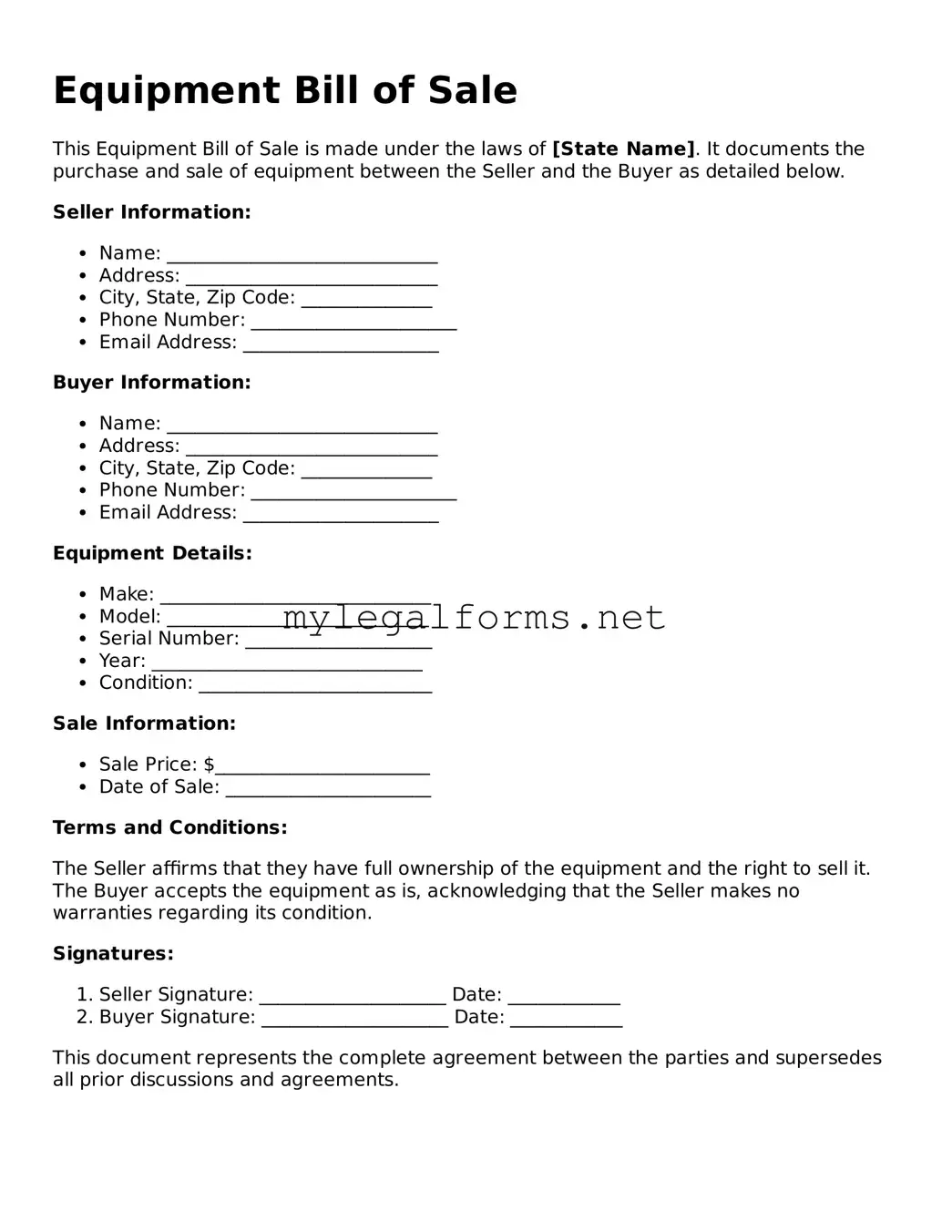Attorney-Approved Equipment Bill of Sale Form
An Equipment Bill of Sale is a legal document that records the transfer of ownership of equipment from one party to another. This form serves as proof of the transaction, detailing the equipment's description, sale price, and the parties involved. Understanding this form is essential for both buyers and sellers to ensure a smooth and legally binding exchange.
Launch Equipment Bill of Sale Editor
